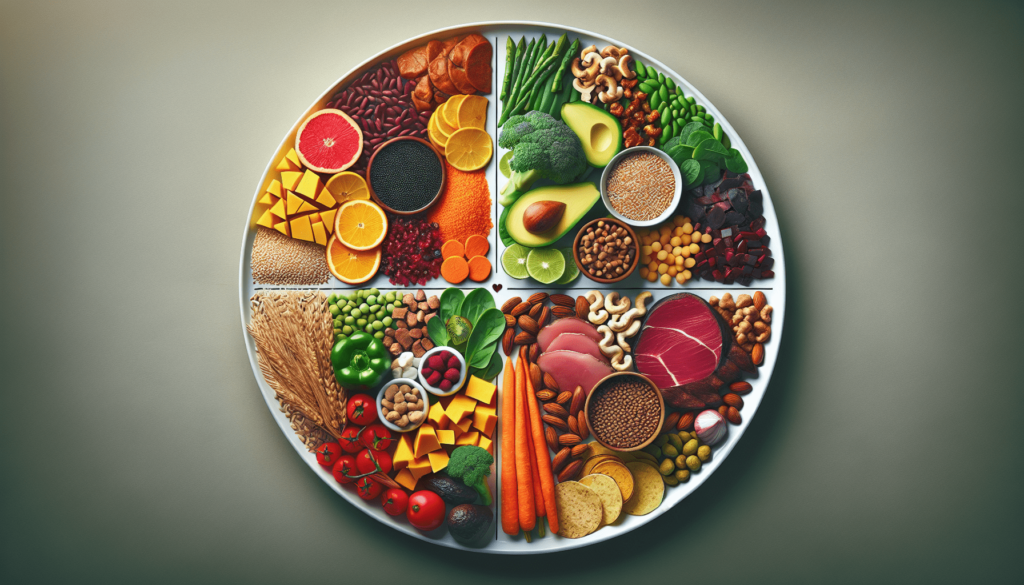Welcome to the world of nutrition where discovering your ideal macronutrient ratio can make all the difference in achieving your health and fitness goals. By understanding the importance of balancing carbohydrates, proteins, and fats in your diet, you can optimize your energy levels, improve your metabolism, and support your body in various ways. Let’s delve into how to determine the perfect macronutrient ratio for your unique needs and goals, and how to make adjustments as needed to feel your best.
Have you ever wondered why macronutrients are crucial for your health?
You may have heard about macronutrients like carbohydrates, proteins, and fats, but do you know why they are essential for your overall well-being? In this article, we’ll explore the importance of macronutrients in your diet and how to find your ideal macronutrient ratio for optimal health and vitality.

Understanding Macronutrients
Before we dive into finding your ideal macronutrient ratio, let’s first understand what macronutrients are and why they are vital for your body. Macronutrients are the nutrients that provide energy and are needed in large quantities by the body. The three primary macronutrients are carbohydrates, proteins, and fats.
Carbohydrates are the body’s primary source of energy and are found in foods like bread, pasta, fruits, and vegetables. Proteins are essential for building and repairing tissues, making enzymes and hormones, and are found in foods like meat, fish, dairy, and beans. Fats are necessary for energy, insulation, and protecting your vital organs, and are found in foods like avocados, nuts, and oils.
Understanding the role of each macronutrient in your diet is crucial for maintaining optimal health and ensuring that your body functions properly.
Why Finding Your Ideal Macronutrient Ratio Matters
Finding your ideal macronutrient ratio is essential because it can have a significant impact on your overall health and well-being. The right balance of carbohydrates, proteins, and fats in your diet can help you maintain a healthy weight, support muscle growth and recovery, regulate your hormone levels, and improve your energy levels and mental clarity.
By understanding your body’s individual needs and finding the ideal macronutrient ratio that works best for you, you can optimize your diet and nutrition to support your fitness goals, improve your performance, and enhance your overall quality of life.
How to Calculate Your Ideal Macronutrient Ratio
Calculating your ideal macronutrient ratio can seem like a daunting task, but it doesn’t have to be complicated. There are several methods you can use to determine the right balance of carbohydrates, proteins, and fats for your specific needs and goals.
One popular approach is to use the macronutrient ratio recommended by the Dietary Guidelines for Americans, which suggests the following distribution of macronutrients in your diet:
- Carbohydrates: 45-65% of your total daily calories
- Proteins: 10-35% of your total daily calories
- Fats: 20-35% of your total daily calories
By following these guidelines, you can ensure that you are getting the right balance of macronutrients to support your overall health and well-being.

The Role of Carbohydrates in Your Diet
Carbohydrates are the body’s primary source of energy, and they are essential for fueling your workouts, supporting your brain function, and maintaining optimal health. However, not all carbohydrates are created equal, and it’s essential to choose the right types of carbohydrates to support your health and fitness goals.
There are two main types of carbohydrates: simple carbohydrates and complex carbohydrates. Simple carbohydrates are found in foods like sugar, honey, and fruit juice, and they are quickly digested and absorbed by the body, providing a quick source of energy. Complex carbohydrates, on the other hand, are found in foods like whole grains, fruits, and vegetables, and they are digested more slowly, providing a sustained source of energy.
To find your ideal carbohydrate intake, consider factors like your activity level, metabolism, and fitness goals. If you are highly active and participate in intense workouts, you may need more carbohydrates to fuel your performance. On the other hand, if you are trying to lose weight or improve your overall health, you may benefit from reducing your carbohydrate intake and focusing on whole, nutrient-dense carbohydrates.
The Importance of Proteins in Your Diet
Proteins are essential for building and repairing tissues, supporting muscle growth and recovery, and maintaining optimal health. Protein is made up of amino acids, which are the building blocks of protein and are essential for a wide range of bodily functions.
To find your ideal protein intake, consider factors like your age, gender, activity level, and fitness goals. If you are physically active and looking to build muscle, you may benefit from increasing your protein intake to support muscle growth and recovery. On the other hand, if you are sedentary or trying to lose weight, you may not need as much protein and can focus on getting protein from plant-based sources like beans, lentils, and tofu.
It’s essential to include a variety of protein sources in your diet to ensure that you are getting all of the essential amino acids that your body needs to function properly. Some excellent sources of protein include lean meats, poultry, fish, dairy products, eggs, beans, lentils, tofu, and quinoa.
The Role of Fats in Your Diet
Fats are essential for energy, insulation, protecting your organs, and supporting brain function. While fats have gotten a bad reputation in the past, it’s essential to include healthy fats in your diet to support your overall health and well-being.
There are four main types of fats: saturated fats, unsaturated fats, trans fats, and omega-3 fats. Saturated fats are found in foods like butter, cheese, and red meat, and should be consumed in moderation to support heart health. Unsaturated fats are found in foods like avocado, nuts, seeds, and oils, and can help lower cholesterol levels and reduce inflammation in the body. Trans fats are found in foods like processed and fried foods and should be avoided whenever possible. Omega-3 fats are found in fish, flaxseeds, and walnuts, and are essential for brain health, heart health, and reducing inflammation in the body.
To find your ideal fat intake, focus on including healthy fats in your diet like avocados, nuts, seeds, olive oil, and fatty fish. Limit your intake of saturated and trans fats, and aim to include a variety of fats in your diet to support your overall health and well-being.
How to Find Your Ideal Macronutrient Ratio
Now that you understand the role of carbohydrates, proteins, and fats in your diet, let’s discuss how to find your ideal macronutrient ratio. One popular approach is to use the macronutrient ratio recommended by the Dietary Guidelines for Americans, which suggests the following distribution of macronutrients in your diet:
- Carbohydrates: 45-65% of your total daily calories
- Proteins: 10-35% of your total daily calories
- Fats: 20-35% of your total daily calories
To find your ideal macronutrient ratio, start by determining your total daily calorie needs based on factors like your age, gender, activity level, and fitness goals. Once you have calculated your total daily calorie needs, you can use the macronutrient distribution recommended by the Dietary Guidelines for Americans to determine the right balance of carbohydrates, proteins, and fats for your specific needs and goals.
It’s essential to remember that your ideal macronutrient ratio may vary based on your individual needs, goals, and preferences. Experiment with different macronutrient ratios to see what works best for you and listen to your body to adjust your diet accordingly.
Tips for Finding Your Ideal Macronutrient Ratio
Finding your ideal macronutrient ratio can be a process of trial and error, but there are some tips that can help you along the way. Here are a few suggestions to help you find your ideal macronutrient ratio:
- Track your food intake: Keep a food diary or use a nutrition tracking app to monitor your macronutrient intake and make adjustments as needed.
- Listen to your body: Pay attention to how you feel after eating different macronutrient ratios and adjust your diet based on your energy levels, mood, and performance.
- Consult a nutritionist: If you’re struggling to find your ideal macronutrient ratio, consider consulting with a nutritionist or dietitian who can provide personalized guidance and support.
- Be patient: Finding your ideal macronutrient ratio takes time and patience, so don’t be discouraged if it takes a while to find the right balance for your body.
By following these tips and suggestions, you can find your ideal macronutrient ratio and optimize your diet and nutrition to support your overall health and well-being.
In Conclusion
Finding your ideal macronutrient ratio is essential for optimizing your diet and nutrition to support your overall health and well-being. By understanding the role of carbohydrates, proteins, and fats in your diet and finding the right balance of these macronutrients for your specific needs and goals, you can improve your energy levels, support muscle growth and recovery, regulate your hormone levels, and enhance your overall quality of life.
Experiment with different macronutrient ratios, track your food intake, listen to your body, and seek guidance from a nutritionist if needed to find your ideal macronutrient ratio and take your health and fitness to the next level. Remember that your ideal macronutrient ratio may vary based on your individual needs, goals, and preferences, so be patient and persistent in your journey to finding the ideal balance for your body.

